Contributory members are able to log private notes and comments about each site
Sites Anne T has logged on trip number: 130 (View all trips)
View this log as a table or view the most recent logs from everyone
Watching Place Waymarker
Trip No.130 Entry No.1 Date Added: 22nd May 2019
Site Type: Marker Stone
Country: England (Devon)
Visited: Yes on 11th May 2019. My rating: Condition 3 Ambience 3 Access 5
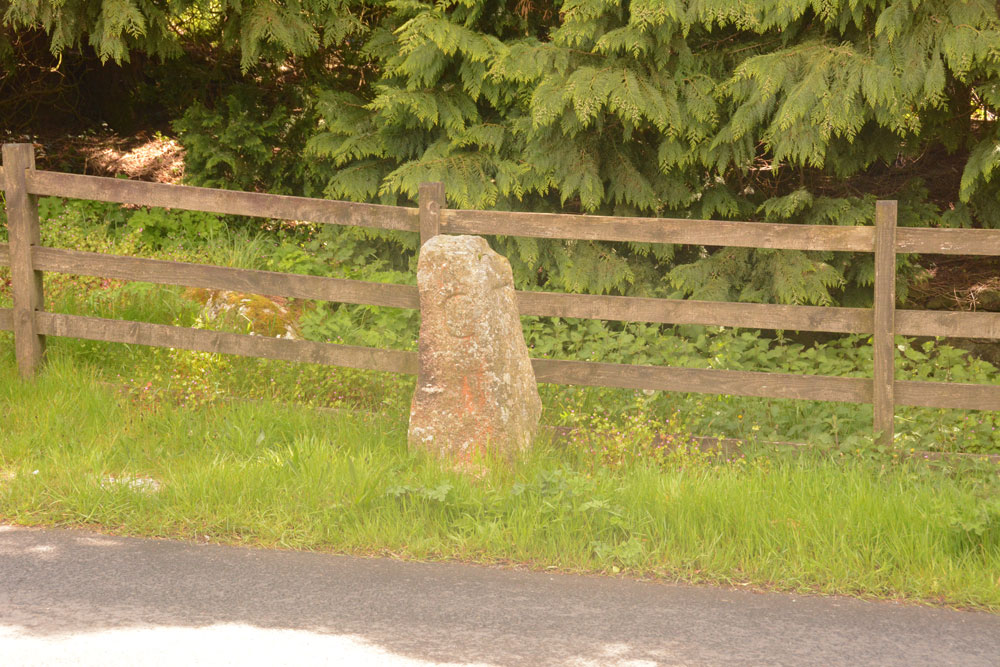
Watching Place Waymarker submitted by Anne T on 22nd May 2019. The Beetor/Watching Place waymarker. This stone dates only to the 18th century, but marks the original site of the Beetor Cross, now located some 100m to the south.
(View photo, vote or add a comment)
Log Text: Watching Place Waymarker/original site of Beetor Cross: Having seen the OS map and sorted out the Pastscape entries, I finally realised that this 'standing stone' was where the cross had originally been located.
Our first stop today was to go and photograph it so I could complete the Beetor Cross entry. It was nice to understand the relationship between the waymarker stone and the wayside cross, although it too me a while to understand the confusion between the names (HE calls the waymarker the Beetor Cross and the cross the Watching Place Cross).
I had to be careful photographing the front of the cross as cars sped quickly at irregular intervals.
Leeper Cross
Trip No.130 Entry No.2 Date Added: 24th May 2019
Site Type: Ancient Cross
Country: England (Devon)
Visited: Yes on 11th May 2019. My rating: Condition 2 Ambience 3 Access 4
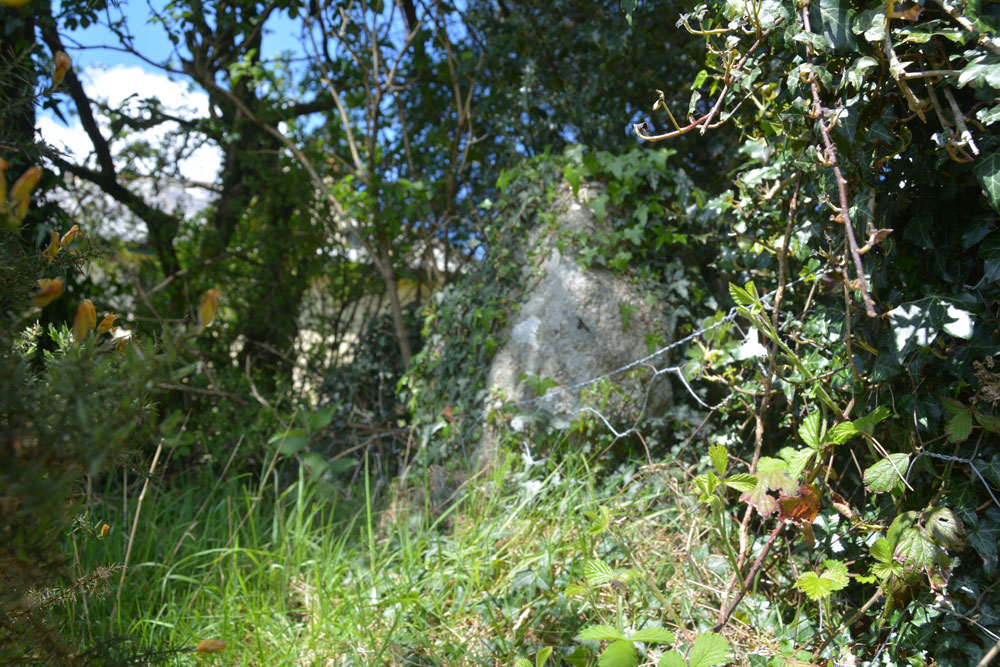
Leeper Cross submitted by Anne T on 24th May 2019. Trying to get a good close up of the south face of the Leeper/Leapra Cross, although it was deep in shade at this time, and I used the flash.
(View photo, vote or add a comment)
Log Text: The Leeper/Leapra Wayside Cross: We had problems locating this cross, so I ended up walking up the driveway up to Moorgate Farm. Just to the right hand side of the gate, I thought I identified an ivy covered cross head shape. Andrew didn’t believe me, so I let myself through the gate and had a closer look. Now I wasn’t convinced.
I heard voices through the hedge, so went in search of the voices, and ended up speaking to a young man who lived in the cottage. He said he knew where the cross was, and took us to the corner of the wall where my ivy covered shape was. This was indeed the Leeper Cross.
He told me that the cross had been moved from where it had been found at Moorgate Farm to Bovey Castle (“which isn’t a castle”), but there had been dissention so it had been moved back to this spot. His family had tried to get the cross located back to its original spot (at Moorgate Farm?) but “there doesn’t seem to be an appetite for it”.
He was happy to leave me to photograph the very ivy covered cross whilst he went back to erecting his new greenhouse.
Challacombe Cross Settlement
Trip No.130 Entry No.3 Date Added: 24th May 2019
Site Type: Ancient Village or Settlement
Country: England (Devon)
Visited: Yes on 11th May 2019. My rating: Condition 3 Ambience 4 Access 4

Challacombe Cross Settlement submitted by TheCaptain on 5th Mar 2017. A photo of what I have called Shapley Common Hut, taken during a walk at Easter 1988.
I dont believe this would be at the location given on the Portal sitepage, but more to the northeast, around SX697830, as our walk first took us south along the ridge to Hookney Tor and Grimspound
(View photo, vote or add a comment)
Log Text: Challacombe Cross/Shapley Common Hut Circles: Having seen quite a few hut circles in Northumberland, I wasn’t expecting much from this site – a few stony-outlined circles in the bracken, but what a lovely surprise this site was – hut circles with very large boulders making up the perimeter. It turned out this was just a taster of the sites we saw around Merrivale, Stanlake and Kestor.
From the Leeper/Leapra Cross, we walked WSW along the B3212 to SX 70049 83251, where an old hollow way/track leads up onto the moor. Armed with the GPS for the first part of the walk,
The hut circles can be clearly seen on UK Grid Reference Finder. The HE entry gives a location just to the west of the line of hut circles – they run from SX 69750 83029 in the south to SX 69779 83133 in the north. Unfortunately the GPS attachment for my camera seems to have stopped working, so I’m waiting for a plan of this site to arrive, so I can assign grid references to each of the hut circles.
Walking to the top hut circle, looking down towards the viewpoint just off the B3212 Princetown Road at SX 69834 83454, it was possible to get a photo of the hut circles all in a line down the hill. Whilst we saw many people head off northwards across the moor, there was no-one else on or near this site at all.
We must have spent a good hour photographing the hut circles and looking at the medieval banks and ditches, some of which cut the hut circles.
Moretonhampstead Cross
Trip No.130 Entry No.4 Date Added: 24th May 2019
Site Type: Ancient Cross
Country: England (Devon)
Visited: Yes on 11th May 2019. My rating: Condition 3 Ambience 3 Access 5
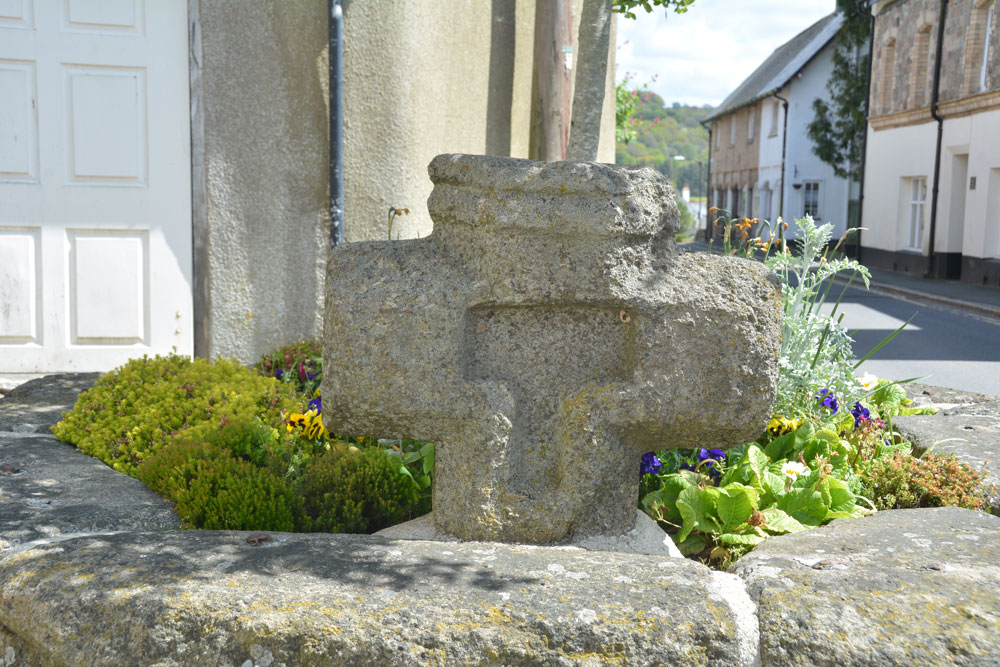
Moretonhampstead Cross submitted by Anne T on 24th May 2019. The eastern side of the cross head, with its T shaped recess (Pastscape describes it as cross shaped).
(View photo, vote or add a comment)
Log Text: Moretonhamstead Village Cross: The remains of this old village cross can be found, surprisingly, on Cross Street, outside the gate at the south side of the churchyard. I confess I had not expected to see a wayside/village cross mounted in a large flower bed! I got some strange looks from locals and visitors photographing this flower bed from different angles.
We then went to explore the church (St Andrew's) then for soup and a cup of tea in a nearby café (the Gateway Tearooms) with superb table service. Carrot and ginger soup with freshly made soda bread. Yum!
Horspit Cross
Trip No.130 Entry No.5 Date Added: 24th May 2019
Site Type: Ancient Cross
Country: England (Devon)
Visited: Yes on 11th May 2019. My rating: Condition 3 Ambience 4 Access 5
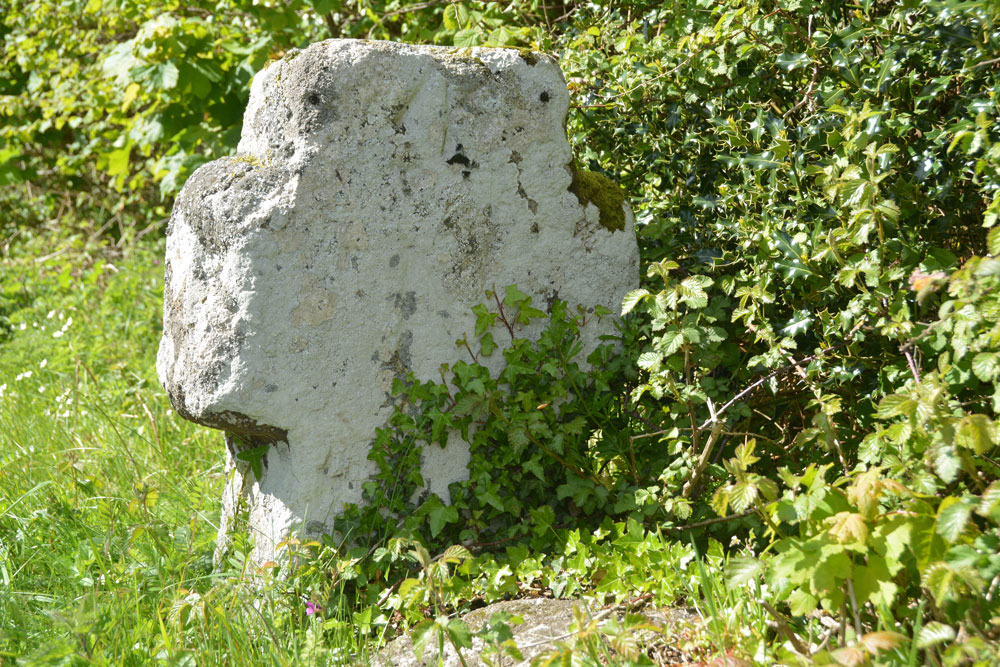
Horspit Cross submitted by Anne T on 24th May 2019. The eastern side of this short, stumpy cross. If there was an initial carved on this face, it was not visible (to us) on the day, or from looking at the photographs later. This is a bench mark on the front of this cross. The top of it is in the centre of the front, and just peeps out above the vegetation growing around its base.
(View photo, vote or add a comment)
Log Text: Horspit Cross, North Bovey: This was to be an afternoon of ‘cross sighting’, with the weather gradually turning from a bright, sunny day to a dull, almost misty day by the time we’d finished.
This squat, small cross sits right on a road junction, with a large boulder immediately adjacent. We managed o park in the entrance way to a new, but abandoned house, which had a tarmacked driveway next to the road, but large, padlocked gates to stop intruders.
The large boulder in front of the cross on the Pastscape photograph I thought looked like part of the cross shaft is in fact just a boulder. The cross has a bench mark on it, which we tried to find; Andrew eventually find it on the ‘front’ of the cross, the top of it showing only just above the vegetation that had grown up around the cross.
Higher Combe Cross
Trip No.130 Entry No.7 Date Added: 30th May 2019
Site Type: Ancient Cross
Country: England (Devon)
Visited: Saw from a distance on 11th May 2019. My rating: Condition 3 Ambience 3 Access 4

Higher Combe Cross submitted by Anne T on 30th May 2019. Andrew (husband) balanced on top of the low stone wall between the minor road to Lustleigh and Cross Park Field to get this photograph of the cross head, from about 100m away. Not the best focused of photographs, but the closest we could get.
(View photo, vote or add a comment)
Log Text: Higher Combe Cross: If we could have obtained access to this cross, access would have been a short walk across a field of improved pasture. Shame the gate was double-chained with two electric fences virtually up against the gate. Lovely horse in the field, though.
Andrew resorted to standing on top of the low stone wall just to the south of the cross, where there was a sufficient enough gap in the trees/hedges to see through. A shame, because it looked as if it was in such a lovely location, just above a small stream, and against an old hollow way.
Bishop's Stone (Lustleigh)
Trip No.130 Entry No.9 Date Added: 1st Jun 2019
Site Type: Ancient Cross
Country: England (Devon)
Visited: Yes on 11th May 2019. My rating: Condition 3 Ambience 3 Access 5
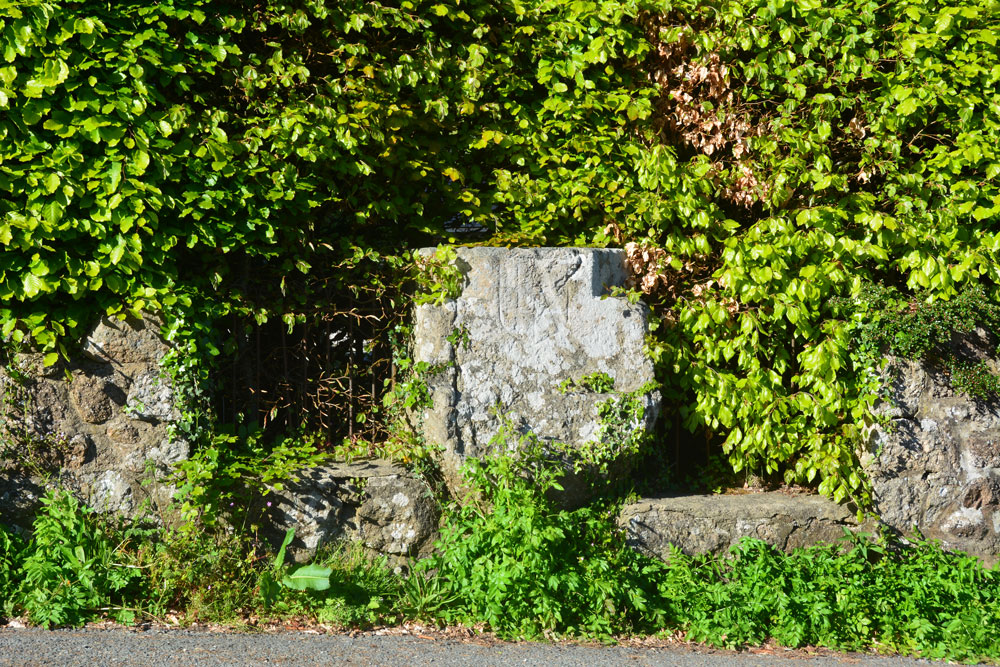
Bishop's Stone (Lustleigh) submitted by Anne T on 1st Jun 2019. The Bishop's Stone, seen from part way across this busy, minor road. The Pastscape photograph shows the stone set against an iron railing; a substantial hedge has since grown up around it.
(View photo, vote or add a comment)
Log Text: Bishop's Stone, Lustleigh: This stone is on a corner of a busy road junction of three minor roads– I needed to pick my time to step part way across the road to photograph the stone from the front. The metal railing shown in the Pastscape photo is now largely hidden by a beech hedge. The stone goes about around a metre or so back into the garden of the house. It’s a lot bigger than it looks at first glance. We were also lucky that the bright sunlight also helped to show up the incised shield.
South Harton Cross
Trip No.130 Entry No.10 Date Added: 1st Jun 2019
Site Type: Ancient Cross
Country: England (Devon)
Visited: Yes on 11th May 2019. My rating: Condition 3 Ambience 4 Access 5

South Harton Cross submitted by Anne T on 1st Jun 2019. This wayside cross leans against a drystone wall, just west of the gateway into South Harton Farm. It has been split into two and re-assembled at some point in its past, but is a nice specimen, and it was worth braving the tiny lanes to find it.
(View photo, vote or add a comment)
Log Text: South Harton Wayside Cross: As we drove along the minor roads from the Bishop’s Stone towards South Harton Farm, the sun went in and a haze started to drift across the fields and it started to become very chilly.
This cross simply leans against the dry stone wall, just to the west of the gated driveway leading to South Harton Farm. It has very obviously been cemented together, but is none-the-less spectacular, and I’m glad we braved the narrow lane to find this cross.
Out of curiosity, I walked to the gate and looked to see if the cross was visible from the other side of the wall, but it is hidden by the drystone wall and the hedge.
Sanduck Cross
Trip No.130 Entry No.6 Date Added: 25th May 2019
Site Type: Ancient Cross
Country: England (Devon)
Visited: Yes on 11th May 2019. My rating: Condition 3 Ambience 4 Access 4

Sanduck Cross submitted by Anne T on 25th May 2019. Getting a bit closer to the cross, it slopes a little. Historic England says this is probably due to disturbance by tree roots around it. The cross was moved to its current location after a fire at Sanduck Farmhouse in 1901, and has been fitted into a modern socket stone.
(View photo, vote or add a comment)
Log Text: Sanduck Wayside Cross: We were going past this spot to get to the next cross on our list, when we spotted this on the OS map, so decided to stop and look for it. We parked outside a very lovely house built around a courtyard; as the road was very narrow, we pulled into a small tarmacked area opposite the house, thinking we’d only be there for a couple of minutes. As we stopped, a lady came out of the house and into her garden. The cross was on a bank at the top of the grass verge, just to the western end of her garden. We said hello to the lady and she replied, and wandered back to the house.
Because the cross was immediately adjacent to private land and against a hedgerow with tall trees around, we didn’t ask to get into the field behind as the back of the cross would have been hidden by the hedge.
Datuidoc's Stone
Trip No.130 Entry No.8 Date Added: 30th May 2019
Site Type: Early Christian Sculptured Stone
Country: England (Devon)
Visited: Yes on 11th May 2019. My rating: Condition 3 Ambience 3 Access 4

Datuidoc's Stone submitted by AngieLake on 5th May 2018. Another view of the stone in Lustleigh Church today, during the May Day celebrations. (Not to be missed on such a sunny, lovely, day!)
(View photo, vote or add a comment)
Log Text: The Writhelstan inscribed stone, St John The Baptist, Lustleigh: Expecting this to be the prettiest village in Devon, I was a little surprised to find I didn’t agree. The church is right in the middle of the village, and we managed to park by the south wall of the churchyard, immediately opposite the village pub.
Going into the church, the Writhelstan stone was stuck on the west wall of the nave in between, and partly hidden by, a gas heater on its south side, and wooden stacking chairs to its northern.
We couldn’t ascertain if the churchyard was oval/circular as a road had been cut to its northern side.
Some lovely old grave slabs in the floor of the chancel, northern chapel and nave. Interesting rood screen with pomegranates and heads. Whilst we were in the church, there were around four to five other sets of visitors, none of whom looked at this inscribed stone, which I thought was odd, but then it was well hidden unless you knew what to look for.
There was also a cross on the village green, which looked to be modern. Could not find this on Pastscape.
There was a photo frame with some information about this stone, which must have been on the wall, but had recently fallen off and the glass had shattered. I carefully moved it from the floor onto the top of the heater and photographed it.
“This ancient stone was removed from a position in the paving below the inner doorway of the church porch on March 13th 1979, in order to preserve it from further wear. It belongs with a well recognised series of commemorative stones erected in the post-Roman period between about AD 450 to AD 600.
The inscription probably read:
“DATUIDOCI CONHINOCI FILIUS”
The language is Latin, although the personal names involved are British. Both the names are in the genitive case, so that the whole inscription requires to be understood as “The stone of DATUIDOC the son of CONHINOC”. Nothing is known of either man, but it is likely that Datuidoc was a Christian, and was buried in the already existing graveyard here about AD 550 to 600, where the stone was erected to mark his grave. It can be assumed that Datuidoc at least, and probably his father also, were men of local importance in this area of eastern Dartmoor during the sixth century AD”.
Lustleigh is one of only four church sites in Devon with an inscribed stone
J.C. Wallace Kemp & A.P.W. Robertson (Churchwardens).
After walking around the church, and photographing the modern cross on the church green, we adjourned to the pub, The Cleave, opposite the church. As it was such as warm evening, we sat in the garden around the back of the pub, listening to the myriad of bird song.
